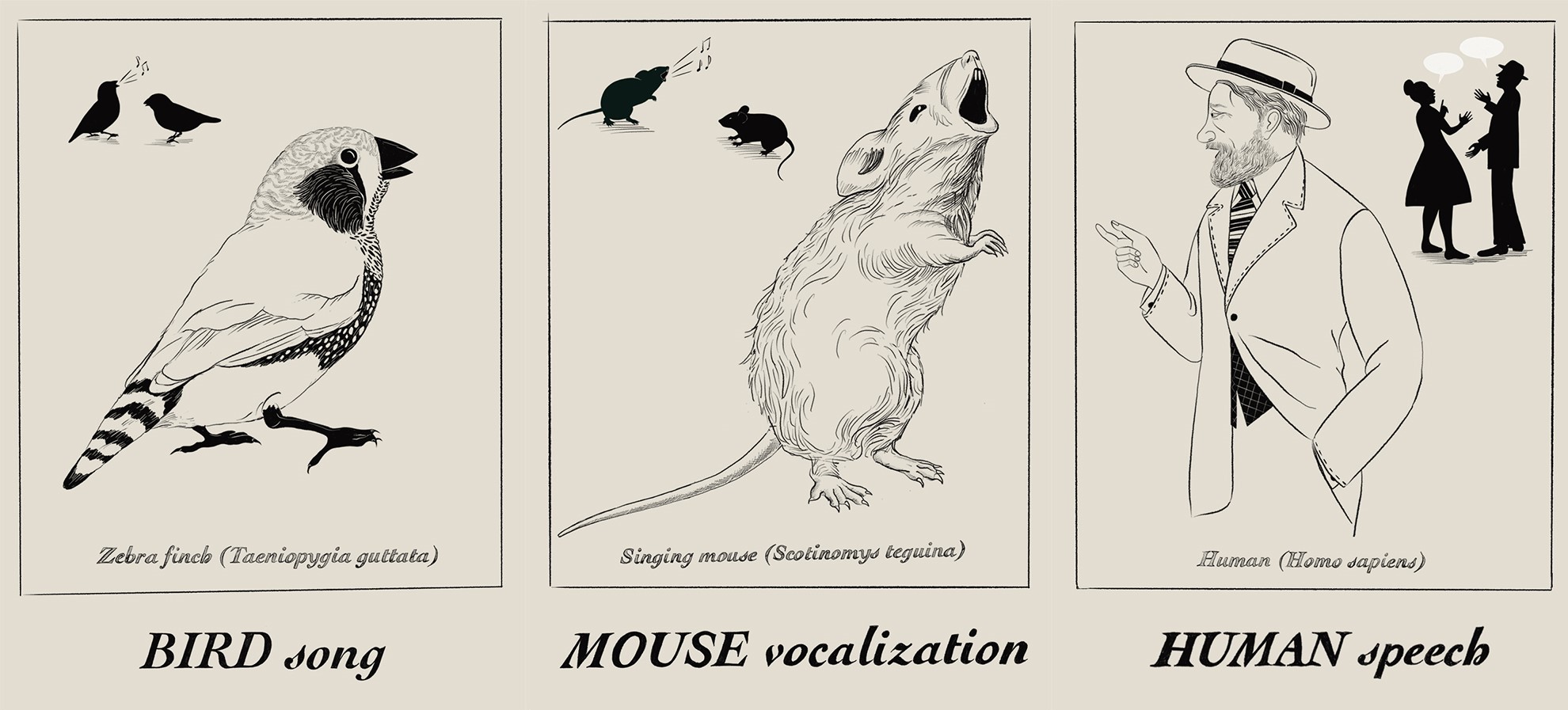
Michael Long is the Thomas and Susanne Murphy Professor of Neuroscience at the NYU School of Medicine. He completed his graduate studies with Barry Connors at Brown University where he investigated the role of electrical synapses in the mammalian brain. During his postdoctoral work with Michale Fee at MIT, Long began to study the songbird model system to uncover the cellular and network properties that give rise to learned vocal sequences. Since beginning his laboratory in 2010, Long has focused his attention on the neural circuits underlying skilled movements, often in the service of vocal interactions. To accomplish this, the Long lab has taken a comparative approach, examining relevant mechanisms in the songbird, a newly characterized neotropical rodent, and humans. In addition to federal funding, the Long lab has also received support from NYSCF, the Rita Allen Foundation, the Klingenstein Foundation, and the Herschel-Weill Foundation.
Abstract: Vocal communication is central to our everyday lives, facilitating social exchange. Despite significant recent discoveries, the neural mechanisms underlying coordinated vocal exchanges remain poorly understood. We examine the brain processes involved in interactive vocal behaviors, focusing on forebrain circuitry in the songbird and the rodent, and we relate these to emerging human studies that employ a range of methods to manipulate and monitor cortical areas relevant for speech.


